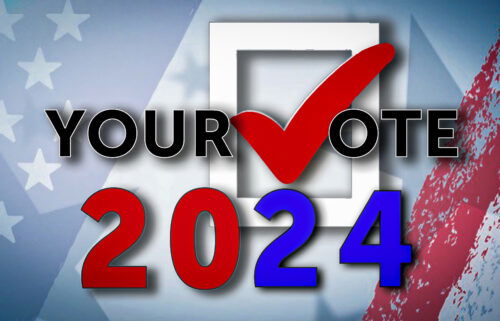Opinion: The Fed’s balancing act is about to get a lot harder
Opinion by Mark Zandi for CNN Business Perspectives
Ever since Russia invaded Ukraine, oil and other commodity prices have surged and recession risks have risen sharply. In fact, the odds of a recession beginning in the next 12 months are getting uncomfortably high: one-in-three, and rising as time goes on. To avoid a downturn, the Federal Reserve will need to carefully calibrate its interest rate increases as it fights against rising inflation.
As the US and global energy companies have stopped buying Russian oil, prices per barrel have jumped to around $100, and gasoline and diesel prices have soared to record highs. Initially, it appeared this would only be a modest hit to the US economy. After all, the US produces about as much oil as it consumes.
However, the economic damage has been much more significant. That’s because higher oil prices have further whipped up already raging inflation. It was a big problem before Russia invaded Ukraine, since the pandemic scrambled global supply chains, causing shortages of everything from vehicles to building materials. But Russia’s invasion has created a much bigger problem. Double-digit consumer price inflation in the next few months is a real possibility. The rate for a 30-year fixed-rate mortgage loan has already jumped to almost 5% from closer to 3% at the start of the year.
This is too much for the Federal Reserve to tolerate, and policymakers have gone on high alert. Fed Chairman Jerome Powell and his colleagues have left no doubt in their forecasts and speeches: They plan to raise interest rates and they plan to do so aggressively.
The Fed will need to be careful, though. In times past, when the economy has struggled with high inflation and rising interest rates, recession has invariably followed. The Fed ultimately steps too hard on the proverbial monetary brakes to rein in the inflation, stock prices tumble, housing markets seize up, businesses stop investing and hiring, consumers pull back on spending, and the economy falters. It’s a delicate balancing act to say the least.
To avoid a recession, it is critical for the Fed to rein in inflation expectations — what workers, businesses and investors believe inflation will be in the future. Workers upset by the prospects of higher commuting, childcare and other living costs are demanding much bigger pay increases, and businesses are increasingly amenable. They think they can pass along those higher labor costs to customers by raising prices for their goods and services. But that could create a dreaded wage-price spiral, where rising prices push wages higher, and vice versa. The vicious cycle took hold in the 1970s and early 1980s and forced the Fed of that era to jack up interest rates and induce a deep downturn.
There are different ways to measure inflation expectations, but the Fed should first focus on investors in Treasury Inflation-Protected Securities. Investors in these bonds put their money where their mouth is when it comes to forecasting inflation, and currently they think consumer price inflation will be well over 3% per annum in the coming years. That’s much too high for the Fed’s comfort — it wants inflation to be below 2.5%, and preferably closer to 2%. So it should raise interest rates until it convinces investors that’s where inflation is headed.
Yet, as the Fed does this it must be sure not to cause interest rates on short-term Treasury bonds to increase above rates on long-term bonds. This so-called yield curve inversion doesn’t happen often, but when it does, a recession ultimately follows a year or two later. In fact, for more than a half century, a recession has ensued each time the rate on two-year Treasury bonds has consistently risen above the rate on 10-year bonds. The yield curve is a prescient soothsayer because short-term rates reflect what bond investors think the Fed will do in the near future, while long-term rates show what effect they think those Fed actions will ultimately have on the economy. If investors believe the Fed will increase rates too high too fast and cause a recession, then they push short rates above long rates.
Last month, two-year Treasury yields briefly rose above 10-year yields, signaling recession risks are high, but the inversion wasn’t long or significant enough to suggest a recession is imminent. The Fed must set interest rates to ensure it stays this way.
But even if the Fed gets this balancing act exactly right, that may not be enough. We will still need a bit of good fortune so that neither the pandemic or Russian invasion don’t take even darker turns. Given all that we’ve been through over the past couple of years, we are certainly due.
The-CNN-Wire
™ & © 2022 Cable News Network, Inc., a WarnerMedia Company. All rights reserved.





